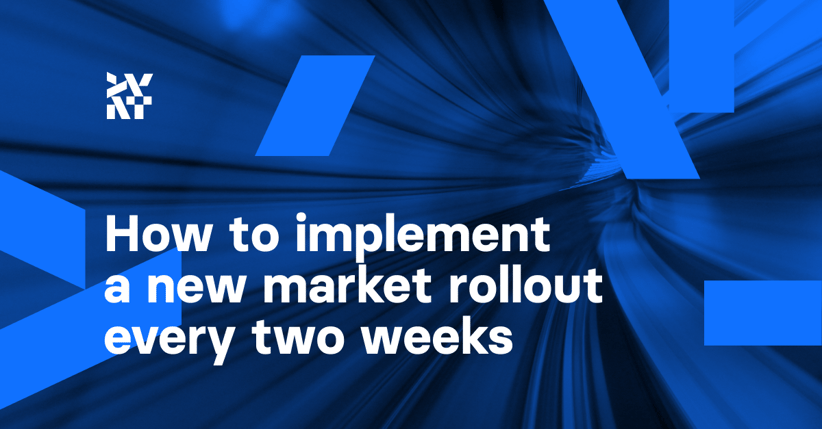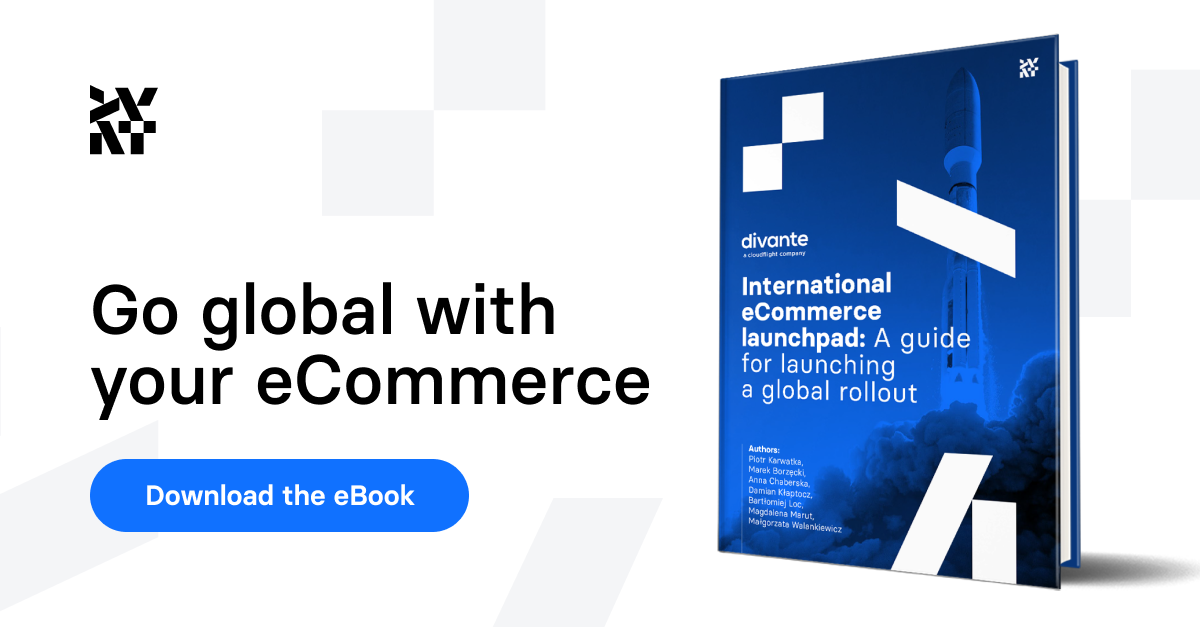All of us have felt the pain of creating a website within an organization. Those projects are often difficult to estimate properly, have struggles with resources, and end up taking weeks and months over the initial deadline. It’s the perfect fuel for burnouts within the team.
The good thing about this process is that once you deliver the website, you’ve learned your lessons, and you know how to avoid those problems in the future. After you find and hone the perfect formula for building a website, you can repeat the process over and over to spawn a couple of new sites every month. This process is the holy grail for eCommerces that aim for quick expansion worldwide.
The fundamentals for rapid eCommerce rollouts
In eCommerce, the website is a crucial source of income, and you can’t allow yourself to make too many errors when building it. To build and scale online shops, you need a sustainable and rapid development process. Once you have the proper tech in place, the rest is smooth and predictable. Here’s how we do it at Divante.
This post shares some of our insights on the continuous deployment of new shops along with a sustainable process that will help you launch a new website every couple of weeks. It’s based on our free “International eCommerce launchpad” eBook. It’s a complex introduction to the processes and solutions that are designed for scaling your business to new markets. If you’re looking for some serious, experience-fueled insights on global expansion, you’ll hardly find a better resource.
Getting ready for the rollout
Let’s start from research. According to Marek Borzęcki, the six main areas to analyze before a global eCommerce rollout are:
- Market specifics
- The landscape of the competition
- The potential of the in-house team
- The eCommerce toolset
- Logistics
- Internal processes and tools
Those points cover two major elements: specifics of the target market and your internal resources. You need to confront them to estimate if your organization can rise to the challenge.
Note that every market is a bit different. We’re not talking about just translating your website and putting it out there. You need to deliver the level of quality customers expect. If you’re entering a new market and carving your own piece out of it, you need to be able to compete with the local and global eCommerce.
“[An eCommerce system] has to be flexible enough to adjust to the specifics of other markets to ensure an effective implementation process in the next steps of a global rollout. A short time to market is key here.”
Marek Borzęcki, Senior developer, Magento expert, and Team Leader at Divante
On the other hand, if you’re aiming for a rollout every two weeks, you don’t want to change too much in your eCommerce system. It has to be agile. If your goal is to set up a streamlined and efficient process, you need tech that won’t drag you down but instead provide you with a boost.
Setting up a scalable and stable environment
For scalability, we usually recommend choosing a cloud-based solution. This lets you allocate resources in a smooth and dynamic way to meet the requirements at any given time. It’s something that can be extremely useful, especially during the initial stages of launching to the new market and during fast growth periods.
What can be tricky are the custom integrations built for your webshop. They can easily become a bottleneck when traffic peaks. Take extra care about their scalability when designing them. You’ll also need load testing to make sure your shop can handle the pressure it’s about to get.
Taking care of extensibility and agility to adapt to the new markets
It has to be said: when it comes to front-end and elastic user experience (UX), a headless solution will most likely be the best option. It will help you introduce new shops and apply changes and adjustments.
Modern eCommerce systems have to stay agile. When you expand to new markets, you’ll have to adapt to new users' needs. They may have different expectations when it comes to delivery and payment methods, localization, and taxes.
That’s where microservice architecture can help. You can use an API to plug in new features and solutions. In general, if you pursue agility, aim for composable commerce. It’ll let you roll out new features with minimal investment.
“We have tried to choose the best partners to minimize new integrations in the future. This basically means choosing integrations with a more global reach. For example, we have chosen a transporter that can ship everywhere in Europe and also China. On the payment side, we choose Adyen because it has almost all the local payment methods that we want to use in the countries we plan to cover.”
Jonathan Ribas, CTO at Zadig and Voltaire
To learn more about IT solutions that can help you with rapid rollouts, check out our post on the top 5 platforms for international eCommerce. If you’re more into the details on how to build a system, take a look at our article about examples of headless architecture.
Building internal processes that support quick deployments
When you set up your business for quick deployments, you also need to find a way to scale your processes. In most modern eCommerce engines, you can clearly separate the orders from different shops. It’s crucial not to get overwhelmed by increasing complexity.
Of course, the more you automate it the better. The same goes for customer service. Try to move your communication to automated solutions like chatbots because they can easily translate multiple languages and provide scale. If you’d rather let people handle it manually, remember to implement an efficient process for hiring new talent. It takes more than multiplying the tech architecture. In most business cases that aren’t focused on delivering state-of-the-art service, you’d rather avoid that.
Hiring is just one example of processes that extend well beyond the two weeks you’re aiming for. That means that your projects will overlap with legal and tax consultations, research, marketing, development, design, and other operations. That’s a task for a capable project manager.
An example of creating 150 stores on Senetic.com
If you want to hear a story on rapid store development, Senetic is an excellent example. We helped them implement Magento 2 Commerce that allowed them to scale up to over 150 stores worldwide.
After the initial research phase, we proceeded to a four-month process of building an MVP. Efficiency and scalability were the keys in this project. After positive test results, we proceeded to build another 21 stores on the same base.
“What we needed was a universal and repeatable solution with which we could set up new stores fast and enter new markets. We work with various, widely available providers, and the new platform had to integrate with their solutions as well.”
Łukasz Bojar, Vice President Sales and Marketing at Senetic S.A.
The final scope of the project included implementing the eCommerce platform itself, integration with Akeneo PIM, Fastly and over 30 extensions, and setting up the release to 21 stores in one year. These stores, deployed all over the world, can have unique or the same domains, catalogs, currencies, prices, taxes, categories, languages, payment methods, and data formats, like a currency symbol and date format.
What’s next?
This is just a fraction of what we have to show you. If you want to discover the entire story of Senetic and see how to get ready for an international rollout, check out our “International eCommerce launchpad” eBook.
Published May 27, 2022













